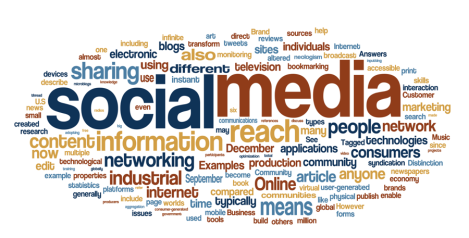In May 2003 LinkedIn was launched. In March of 2006, Jack Dorsey famously sent the first Twitter message into the electronic ether. 2 years before that Mark Zuckerberg created Facebook. They are perhaps our most influencial and real-time informational tools and Twitter has been dubbed “the pulse of the planet” and yet as we reach a decade of using social networks and social media both as a personal and professional tool companies are still getting even the basics so wrong.
Consider the UK retail chain HMV’s recent example, or when Burger King was famously hacked and the social media team was asleep at the proverbial wheel for hours. Social media is an incredible way to connect to your customer base but only if you’re willing to use it as such, and for that to happen you have to treat it more than a simplified and cheap customer face of your brand.
Two perfectly simple examples, two positive results
Example 1
I caught a flight from Gatwick to Edinburgh, checked into Foursquare when I landed and caught a taxi. Within 3 minutes of checking in I received a tweet from Ryan’s Bar in the West End of Edinburgh saying that they have some good deals on for food and drink. A quick Twitter conversation later and I was redirecting the taxi and into Ryan’s Bar for food, a gin and a chat with the people responsible to understand how they did it. It was all integrated, monitoring social media activity for people who were arriving into Edinburgh and offering deal suggestions for a place to eat and drink.
Example 2
When I was working in Amsterdam during the snowy chaos of December 2011 I was travelling with KLM. When the boards lit up with cancellations I knew that making a phone call to Customer Services was going to be a hard task so I turned to the @KLM Twitter account for help. Within minutes they responded and we were exchanging Direct Messages and they had one of their team call me and change flights.
Ryan’s Bar and KLM are just two very simplified cases in point when a company and brand get it right with even basic integration to customer service and marketing back-ends but you can imagine just what you can do when you connect this to billing systems, transaction handling, campaign and response management. When you have a real-time interface that tracks and monitors all this activity within a single dashboard you have a powerful tool to manage and understand all the customer touch points with your brand and just what is happening when a customer mentions your product. The aggregation of social media data and crowd generated information in real-time is incredibly powerful for brands.
But how many brands out there still don’t collect even a Twitter ID when a customer registers with them ? How can you as a business monitor whether someone mentioning a bad experience on social media is just mouthing off by proxy or an actual customer with an issue if there’s no way to tie that back into your systems and to a genuine customer record .
A ‘Like Us On Facebook’ message becomes a hollow request if it’s only to collect another numerical statistic and not use that connection as a chance to understand that consumer’s behavior and attitudes towards your brand and product.
If a customer retweets a message of yours or becomes a strong brand advocate that leads to some friends buying the product or service shouldn’t you track this and reward that customer ? Discounted offers are becoming more personalized and tailored to customer interaction types than just sending an obligatory 5% discount coupon through email with the “Dear
Look at how Oreo responded to the Super Bowl blackout. They’ve baked social media into the DNA of their business, it has become integrated into everything they do, from marketing to decision making, and has turned the brand into a proactive leader than a reactive runner.
But in order to achieve this kind of intelligence you need to integrate social media across all your systems and customer records. It becomes part of your decision making and the overall customer experience just as a call-center did all those years ago.
And you don’t run a call-center as a standalone entity with no integration to your customer and back-end systems so why would you with social media ?




